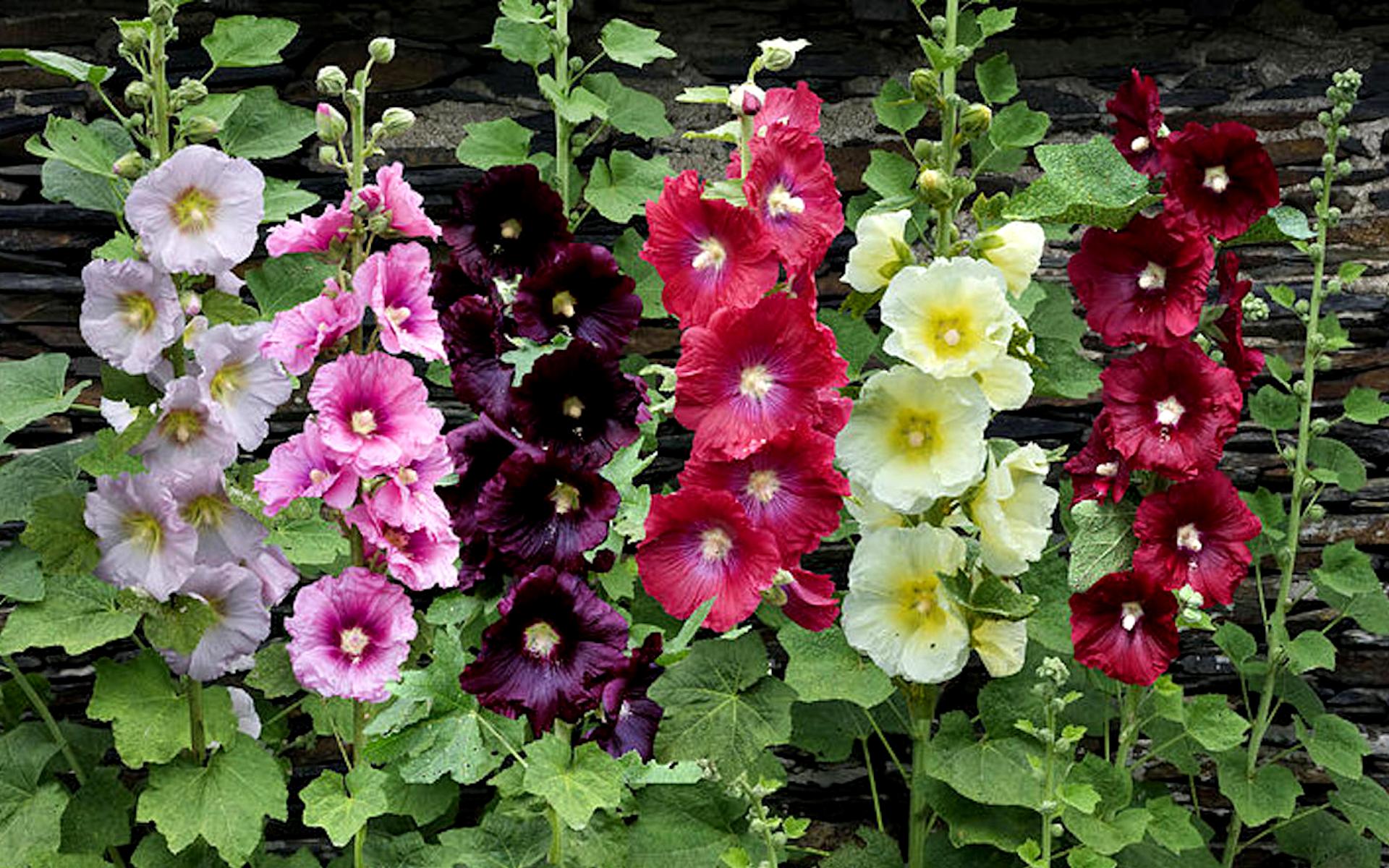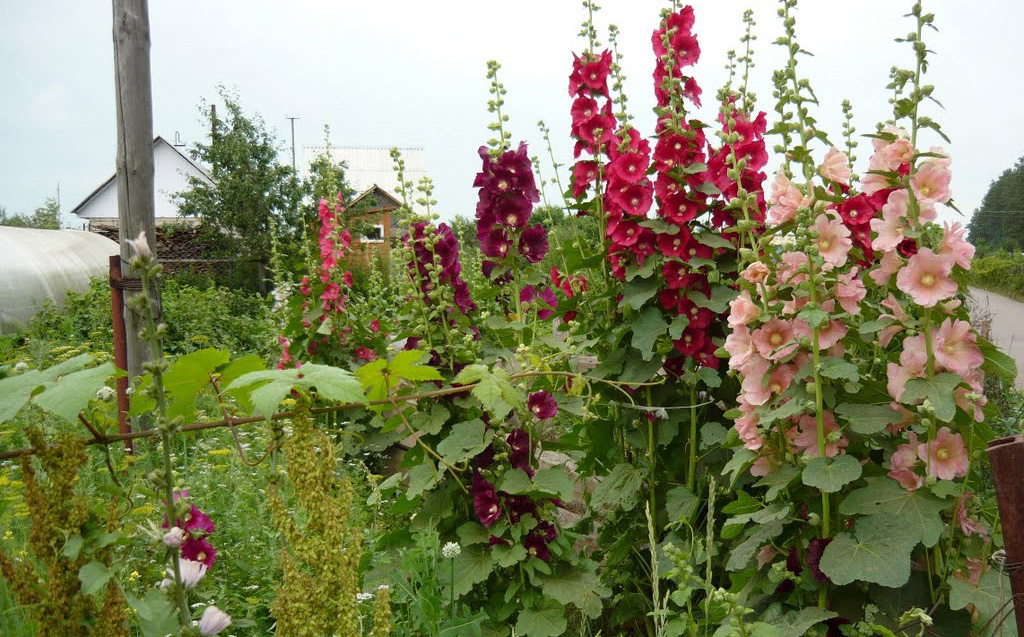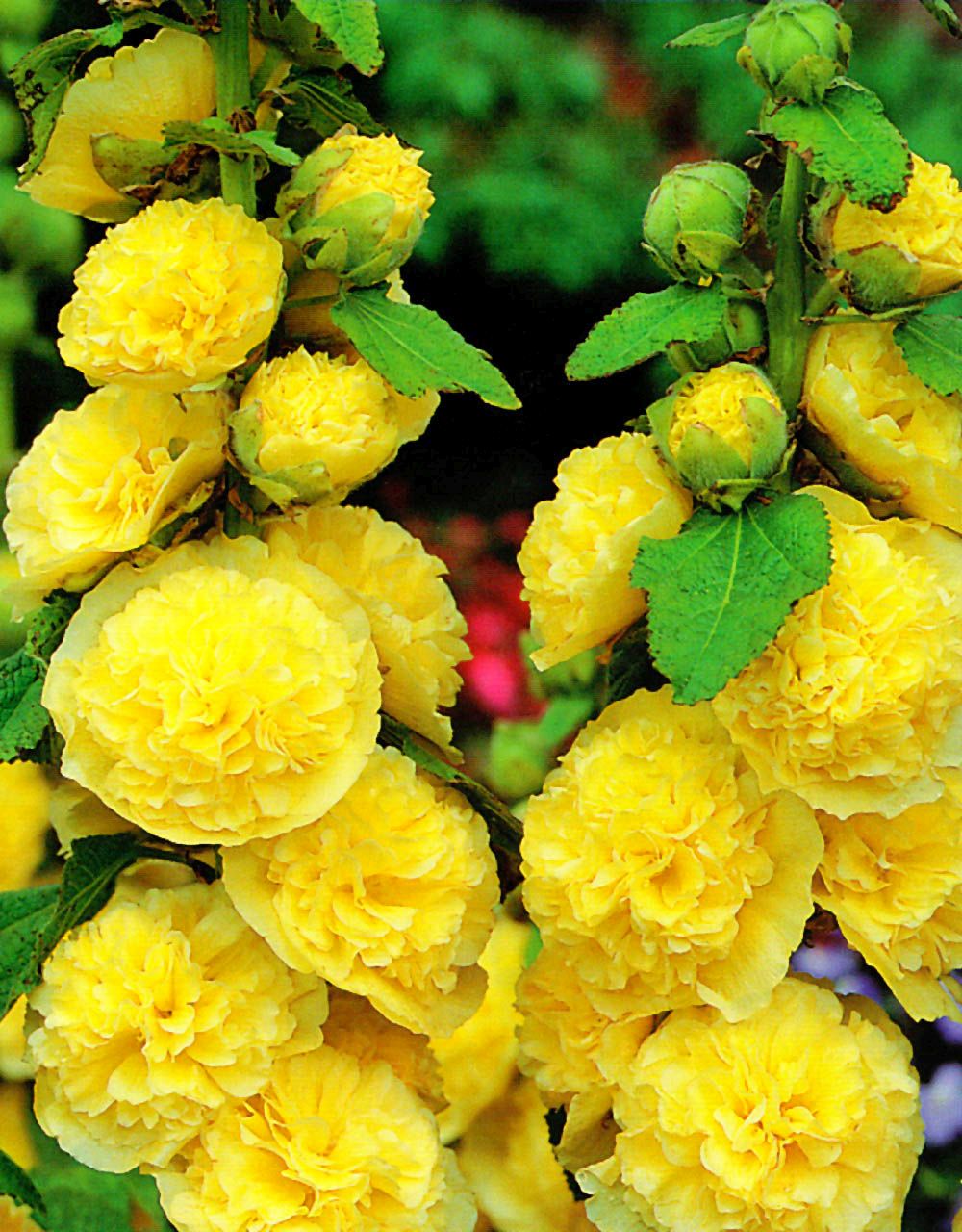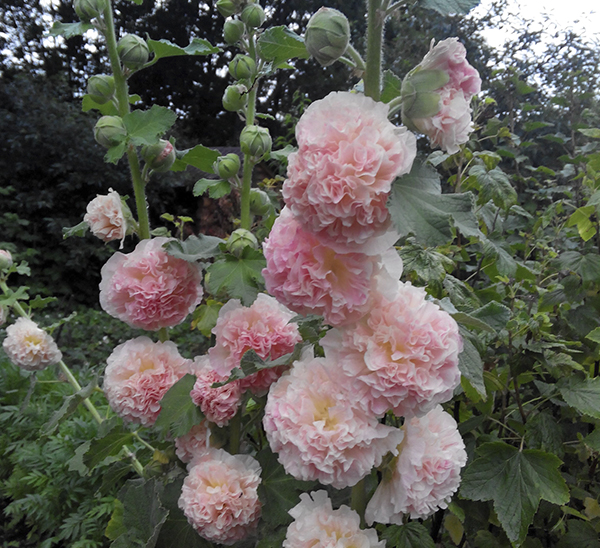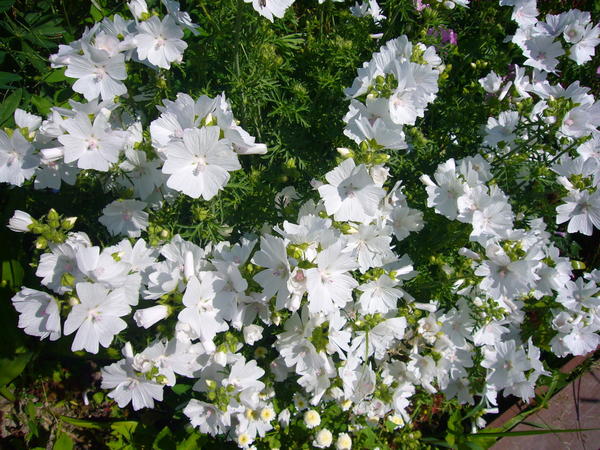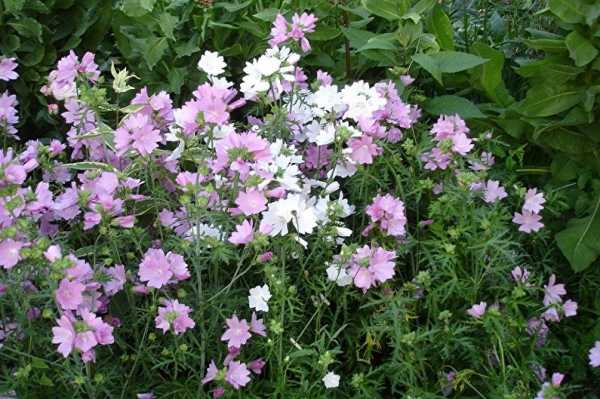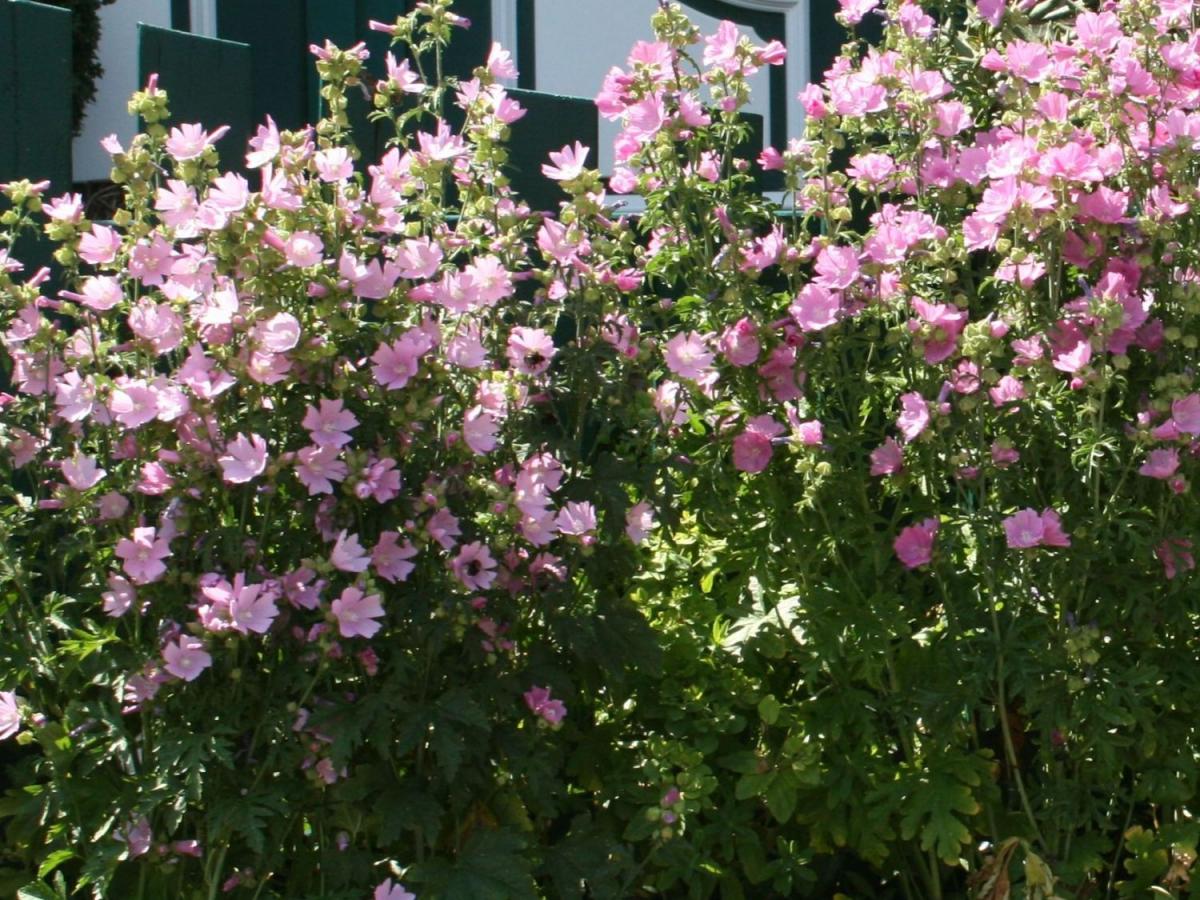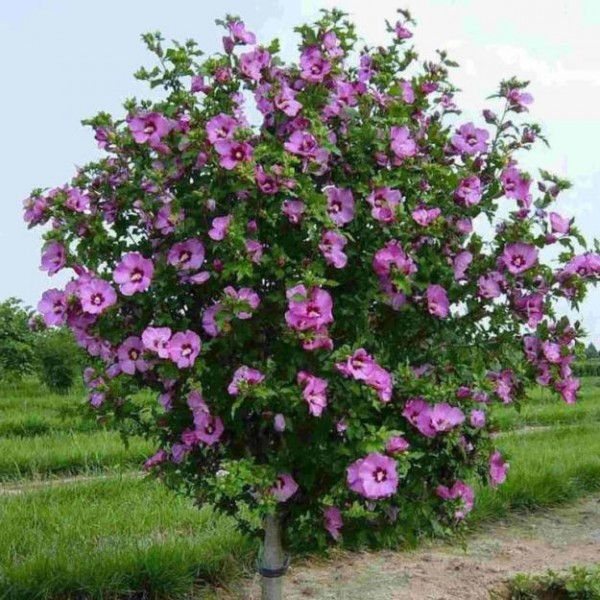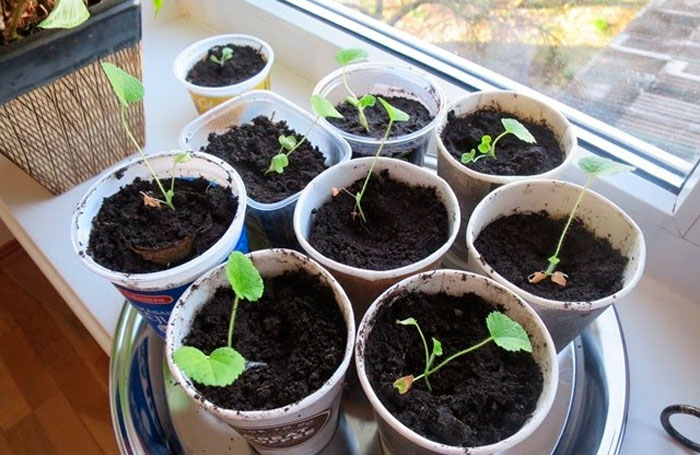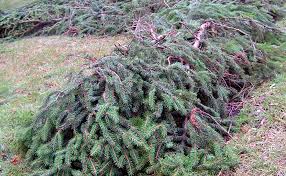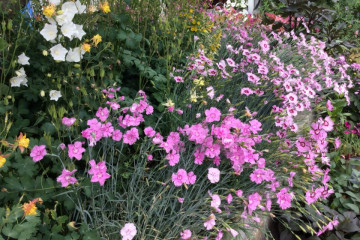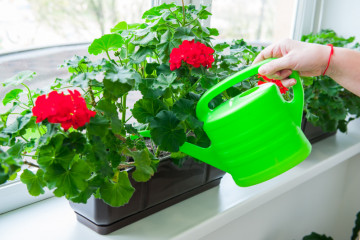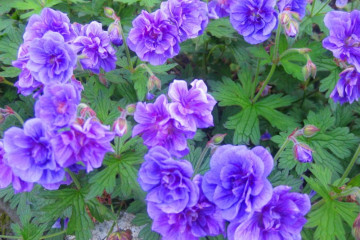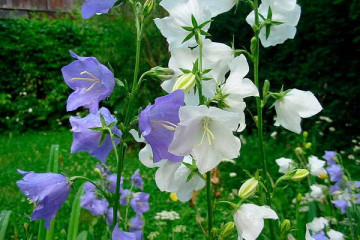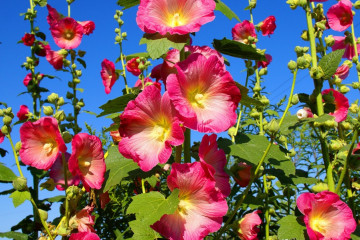Perennial mallow - planting and care
Content:
Mallow is a flowering plant that can be planted for decorative purposes. The mallow flower has long been popular among gardeners. The plant looks harmoniously both on flower beds, flower beds and rock gardens, and along paths, fences and hedges. A two-year-old or more mature flower is already blooming brightly. He is able to decorate any homestead. The presence of a plant will revive any area, be it a private house or a summer cottage. Mallow, which is also called mallow, kalachnik, stock-rose, cannot be overlooked on the site. It is a tall plant covered with many large, vibrant flowers. In nature, there are more than 30 varieties of stock roses with various shades of buds from white to maroon.
Perennial mallow: planting and care
This perennial was grown in ancient Egypt as a medicinal plant. Hippocrates wrote a lot about the beneficial properties of mallow. Currently, the stock-rose is found in various climatic conditions in Europe, Asia, Africa and America. Mallow grows in forests, along roads, on slopes, near settlements.
What does the mallow look like and how does it bloom?
What is mallow? This is a tall plant, reaching 2.5-3 meters in height, the top of which is covered with large, funnel-shaped flowers with a diameter of 7 to 13 centimeters. The petals, depending on the variety, can be arranged in one or several rows.
Mallow flower: description
The color of the buds can be completely different: white, pink, red, yellow, burgundy. The mallow blooms for a long time, from early June to September, delighting gardeners with its beauty and grace. Mallow leaves are heart-shaped, rounded with villi. The root system is fusiform, long, branched. After flowering, fruits appear on the stem of the mallow - polyseeds.
Varieties and varieties of stock-rose
Despite the fact that in nature there are a large number of different types of mallow, only a few of them are common among flower growers. The most popular is the Yellow Queen mallow. It is a perennial plant, reaching 2-2.5 meters in height, covered with large, double, golden-yellow buds up to 12 centimeters in diameter. This variety of mallow is photophilous and tolerates dry weather very well. In the cold season, it is recommended to cover the yellow mallow with spruce branches or other material that allows air to pass through.
Also, flower growers know the varieties listed below.
Perennial Terry Malva is an elegant, ornamental plant, a hybrid obtained as a result of long and painstaking work of breeders. A plant up to 2 meters tall with voluminous, lush, peony-like flowers of pink and purple hues. Terry mallow is a favorite flower of landscape designers, and it looks great both in group and in single plantings.
White Perfection is a low-growing plant that does not exceed 60 centimeters in height, strewn with small, snow-white flowers.
Mallow White Tower is another variety of white, musky mallow. A low-growing shrub, reaching 70 centimeters in height. This plant looks attractive not only in a flower bed, but also in a bouquet or flower arrangement.
The Pink Tower is a musky variety of pink mallow. A plant with an average height of 70-100 centimeters with the most delicate pink flowers, which looks great in a flower bed in combination with the White Tower.
Shrub is a spectacular garden plant that grows up to 2.5 meters. Mallow bushes are dense, spreading, covered with large, bright flowers with a delicate aroma. The bush rose is not whimsical at all in care and perfectly tolerates both frost and drought. To plant bush mallow, you need to choose a sunny place, since it will bloom much worse in the shade.
Arboreal is a small tree with large, double flowers. Most often in landscape design, there are white and pink colors of buds, but breeders do not cease to amaze and bring out all new varieties of unusual shades - red, peach, turquoise. The height of the tree is 3-3.5 meters. The plant is resistant to disease and frost.
Wrinkled - this plant, conventionally called mallow, reaches 2 meters in height and is strewn with large, funnel-shaped flowers of various colors, blue color may prevail.
Planting and planting rules: malvina flower
Mallow is a flower that is completely unpretentious and easy to care for. Growing a plant begins with the choice of planting material and planting site. Where to plant perennial mallow? For the favorable growth and development of the mallow, a site is selected that is well lit in the daytime. The less light, the poorer the bloom will be. Stock rose adapts quickly and grows in almost any soil, but it will thrive best in loose soil filled with oxygen and nutrients. The planting site must be high and dry.
The accumulation of excess moisture in the soil can lead to rotting of the root system. It is best to plant the flower on the sunny side of the house, where it will be protected from the wind. Plant care is extremely simple and straightforward. It is recommended only to periodically loosen the soil to ensure active air exchange for the roots, and to remove weeds. Watering is necessary for mallow only in dry, hot weather. After flowering, the stalks of the mallow are cut to the level of the soil, cover the soil with mulch - straw, humus, and cover the bushes with spruce branches.
Mallow flowers: cultivation
Growing a stock rose from seeds is carried out in several stages.
Collection of planting material. After flowering, fruits appear on the stem of the mallow - boxes with seeds. It takes several weeks for them to fully ripen. After they dry and darken, you can collect them. It is worth noting that the seeds are suitable for planting for three years after harvest, and it is in the third year that they germinate best.
The choice of growing method. The seeds can be planted both in open ground and in a container for growing seedlings. The planting method depends on how soon the grower wants the plant to bloom. When planting seeds in the ground, by autumn only the first rosette of leaves is formed on the plant. If you grow mallow in seedlings, then by the end of July you can already enjoy the first blossoming flowers.
Growing seedlings. For timely emergence, it is necessary to plant mallow seeds in containers at the beginning of February.To reproduce by seedlings, the planting material must be soaked in water at room temperature for swelling and planted in the soil at a shallow depth. The most optimal air temperature for growing seedlings is 22 degrees Celsius.
Transplanting seedlings into soil. It is not possible to plant mallow seedlings in open ground until early May, when the ground is already warm enough and the risk of frost is minimized. Plants are planted in the evening so that they do not wither under the scorching sun. The distance between the bushes in the flowerbed should be at least 30 centimeters.
If we are talking about planting seeds in the ground, then this should be done in May. When spring firmly comes into its own, it is necessary to find a suitable place for planting mallow, loosen the soil, water and plant seeds a few centimeters deep. Under favorable climatic conditions, the first shoots will appear after a couple of weeks, but the mallow will bloom only next year.
There are several techniques that will speed up the seed germination process:
- soak. If the seeds are soaked in water heated to 45 degrees, the peel will soften, and the seedlings will sprout much faster;
- mini greenhouse. The seeds are laid out on a paper napkin, folded several times, at a short distance from each other, placed in a bowl and poured over with warm water. To create a greenhouse effect, cover the plate with cling film and leave for 24 hours. You can also use a soft cloth instead of a paper napkin;
- hydrogel is a product specially designed for germinating seeds. You can buy it in a specialized store. Before placing the seeds in the hydrogel, it is necessary to hold them in a calcium solution;
- you can simply place the seeds in a dark, damp place. This microclimate activates the growth of roots and after sowing, they will quickly sprout.
Preparing for landing
How and where to plant mallow? This question is asked by every gardener who decides to decorate his site with a stock-rose. As noted above, mallow is very fond of light. In the shade, the flowers of the plant will be sparse, small and pale in color. The planting site should be well lit by the sun's rays. It is optimal to plant the mallow on a hill so that water does not accumulate in the soil. To prevent tall stems from being broken by the wind, it is best to plant the plant along a wall or fence. The growth activity and flowering of the stock rose will depend on the selected area.
To saturate the soil for planting mallow with nutrients, it is necessary to dig it up and fertilize it with humus. As for the seedlings, the following soil is prepared for it: two parts of the land from the garden plot, one part of sand and one part of humus. Actively growing mallow does not require frequent feeding. Once a year in the spring is enough. For fertilization, you should use complex mineral fertilizers for flowering plants.
Care after landing
Caring for a flower after planting is quite simple. After planting the seedling in the ground, it is necessary to press down well its roots with earth and water it abundantly. After rooting and the beginning of active growth, it is necessary to loosen the soil and remove weeds. Young bushes require more frequent watering in small quantities. As you grow, the number of waterings is reduced.
When buds appear on the stem of the mallow, it must be fertilized with a mineral complex. For abundant flowering, it is recommended to remove the peduncles until the fruit begins to form on them. Mallow is a completely unpretentious flower, and it does not require special attention and special care.
To prevent the long and fragile stems of the plant from being broken by the wind, you can tie them to supports.
Preparing for the cold
Caring for mallow is needed not only when summer, but also requires careful preparation of the plant for winter. Despite the fact that the stock rose copes well even with severe cold, you still need to take care of it before winter. The most important step in preparing for wintering is pruning the plant. It is necessary to cut off long stems immediately after flowering, so that the strength of the plant is not wasted on the ripening of polyseeds.
Some varieties of mallow, after pruning, have time to grow again and bloom before the onset of cold weather.
If, nevertheless, a decision is made to cut the stems, then this should be done at the root. It is advisable to cover with branches of coniferous trees, cover with peat or humus.
Mallow is a truly graceful plant that attracts with its extraordinary beauty. Despite the ease of care, mallow charms with its appearance, decorating the backyard.
